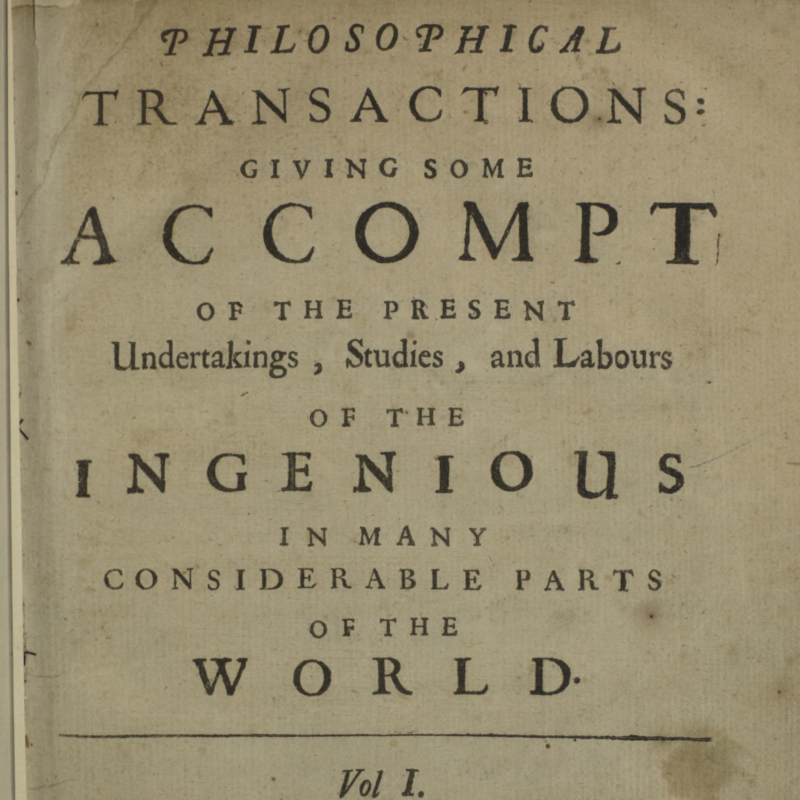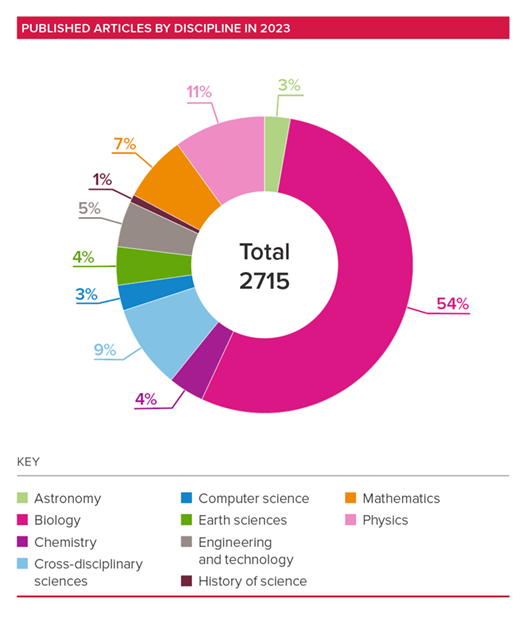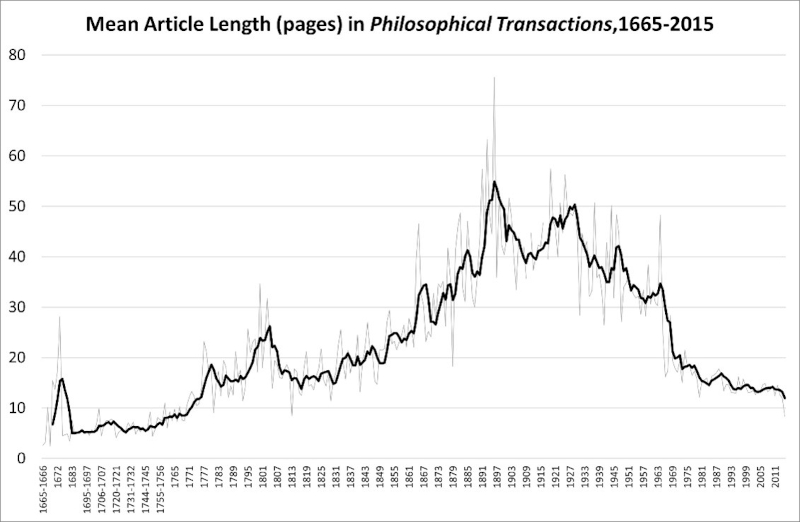As part of the celebrations of the 360th anniversary of the Philosophical Transactions, we thought that it would be interesting to look at some of the trends and changes in the journal since its first publication in 1665.

Given its longevity and the availability of records and data, the Philosophical Transactions has been a resource for historians of science and journals. We are particularly lucky to benefit from the research of Professor Aileen Fyfe and her colleagues at the University of St Andrews on the history of the journal. Most of the below information comes from the project website.
Here are a few general things that we wanted to highlight, with some links to find further information.
- For most of the history of the Philosophical Transactions, its publication was a severe drain on the Royal Society's finances. Only during the twentieth century did it transform from a purely philanthropic, mission-driven activity to a commercial business opportunity.
- In 1887, the journal split into the ‘A’ Series (physical sciences) and the ‘B series’ (Biological Sciences). The graph below (see source) shows the number of ‘A’ (orange) and ‘B’ (green) submissions from 1927 – 1989, across both Phil Trans and Proceedings. Throughout this period, the Society was receiving more submissions from the physical sciences (series A) than from the life sciences (series B). But by the 1970s, the gap was closing and today biological science submissions outweigh those from the physical sciences. We can also clearly see the effect of World War 2.


- Articles in the Philosophical Transactions started as short letters but over time they expanded until articles were averaging over 50 pages around 1900. Lengths have steadily decreased over time with a real shift around 1970. This likely reflects changes in publishing practices with more succinct reports becoming normal. Note that this data is a rough approximation. More information on the data behind this is available.

- Until the late 1980s, we received a modest number of submissions per year (under 500), and most were published. In 1990, the requirement for a Royal Society Fellow to communicate all papers was dropped, and submissions (and rejections) started growing. In 2024, the Royal Society received over 9000 submissions across its journals, and published 2750 papers.
These are just a few trends that I found interesting, but the data is rich and available and we would encourage people to dive into this. These posts are an excellent starting point.
As well as being a resource for studying the changing nature of journal publishing itself, the journal’s rich archive can also provide insights into changes in language over time. For example, this article by Chris Meyns looked at the development of the term ‘Data’. A group at Saarland University in Germany have developed the ‘Royal Society Corpus’, tokenising all articles for 1665 to 1996 and providing the data following the FAIR principles. Their research illustrates the standardisation of the scientific article in form and language and opens up our journals to further linguistic research.
Our journal Notes and Records welcomes submissions from researchers in the history of science, technology and medicine, including articles on the nature of scientific publishing. If you are studying any aspect of the history of our journals we would be very pleased to receive your papers for consideration!
Visit our anniversary page for more content celebrating 360 years of publishing.





